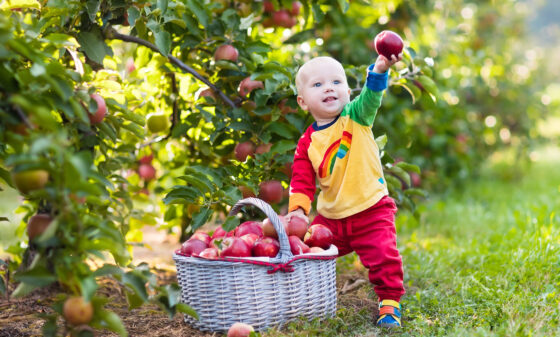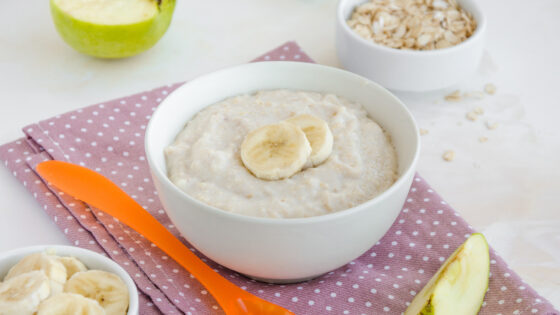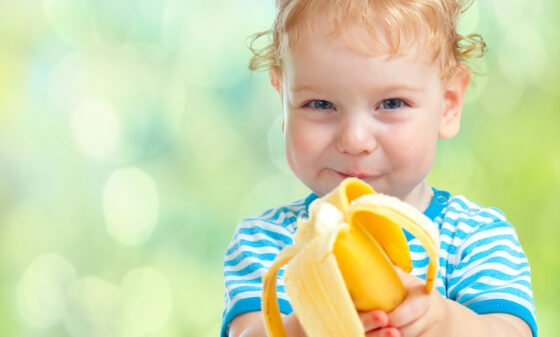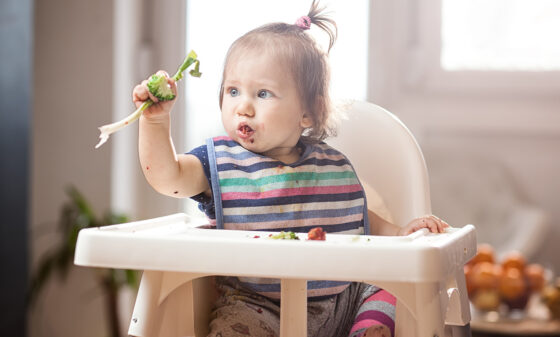6 tips to help your baby have a healthy, happy tummy

Key points
- Find simple explanations of terms like ‘stomach’, ‘gut’, ‘gut flora’ and ‘gut microbiota’
- Learn what you can do to support your baby’s digestive system
- Help your baby have a healthy tummy by building up their gut flora, providing good nutrition, feeding them prebiotics, keeping their fluids up and getting exercise
Simplifying the jargon
You might read lots of articles about your baby’s tummy, stomach, gut, gut flora and gut microbiota, and wonder what it all means. You might ask yourself, “Are they all the same thing?” Let’s break it down.‘Stomach’ and ‘tummy’ are generally used to mean the same thing. The stomach (or tummy, if you prefer) digests food using acids and enzymes.‘Gut flora’ and ‘gut microbiota’ can be used interchangeably. These terms refer to the bacteria that live in our digestive system. Having a diverse gut flora means having lots of good bacteria.When the term ‘gut’ alone is used, it often refers to the entire system that starts at the mouth and ends at the anus. Along the way, this includes the stomach (or tummy), small intestine and large intestine.We all know how uncomfortable an upset stomach can be, so we don’t want our babies going through that discomfort.Here are 6 things you can do to help your little one have a healthy and happy tummy.
1. Breastfeed where possible
Our gut flora is made up of thousands of different bacteria. These tiny microscopic bacteria are essential to your baby’s lifelong health and wellbeing, and childhood is an important time to develop gut bacteria. Prebiotics are naturally found in breastmilk, which is the best source of nutrition for most infants. The prebiotics in breastmilk can have a positive effect on your baby’s gut flora by encouraging the growth of good bacteria and reducing the growth of potentially harmful bacteria, producing a happy, healthy digestive system.If you can’t, or choose not to breastfeed, consult your health care professional for advice on suitable options for your baby.
2. Encourage healthy eating
The food your little one eats has an impact on their digestive system, so make sure every mouthful is packed full of the right nutrients.In addition to their usual milk, from around 6 months (but not before 4 months), a baby can commence eating solids. It’s a good idea to introduce variety over time with fruits, vegetables, whole grains, some lean meats and fish. Sugary and processed foods should be limited.If your baby sees you and the family enjoying foods, they will be more likely to try them, so the best way to encourage them to eat a diverse range of healthy foods is to demonstrate that behaviour yourself.
3. Include prebiotic foods in your baby’s diet
Prebiotics act as food for the good bacteria in the gut to thrive and grow, and may have a positive impact on gut flora health.As part of your baby’s healthy diet, try to include foods that contain prebiotics. You can introduce everyday food such as:
- Bananas
- Watermelon
- Apples
- Nectarines
- Sweetcorn
- Asparagus
- Snow peas
- Dates
- Oats
- Couscous
- Gnocchi
- Bran muffins
- Rye crackers
- Chick peas
- Lentils
- Baked beans

4. Offer little meals, and often
Your baby’s stomach is, like the rest of their body, much smaller than yours. So, remember to offer your baby small meals on a regular basis to avoid stomach discomfort. The volume of food and the length of time between meals will increase over time as your little one’s stomach grows and develops.
5. Keep the fluids up
Remember to regularly offer your baby fluids. Adequate levels of fluids are an important factor in preventing constipation, which can be a common occurrence as your baby grows and develops into a toddler. Offer water and milk as their main fluids, along with fibre-rich foods such as wholegrain cereals, kiwifruit and high-fibre breads.
6. Get moving
We all know how much better we feel after exercise, and it’s no different for your little ones. Massaging your baby’s tummy or gently moving their legs in a cycling motion can help encourage bowel movements, and for toddlers some general exercise may help to get things going. Why not enjoy some dancing, stretching or yoga together? Alternatively, taking a walk outside and enjoying nature is a great way to encourage your little one to enjoy exercise.
If you're returning to work, let us help you return with confidence.
Our newsletter has tools, tips and expert advice to help ensure you and your child are ready.
Returning to work?
Sign-up to receive practical tips and advice for a smooth transition back to work.




